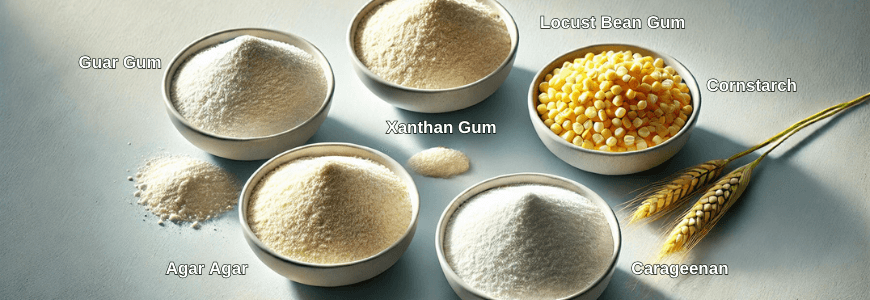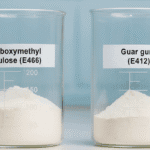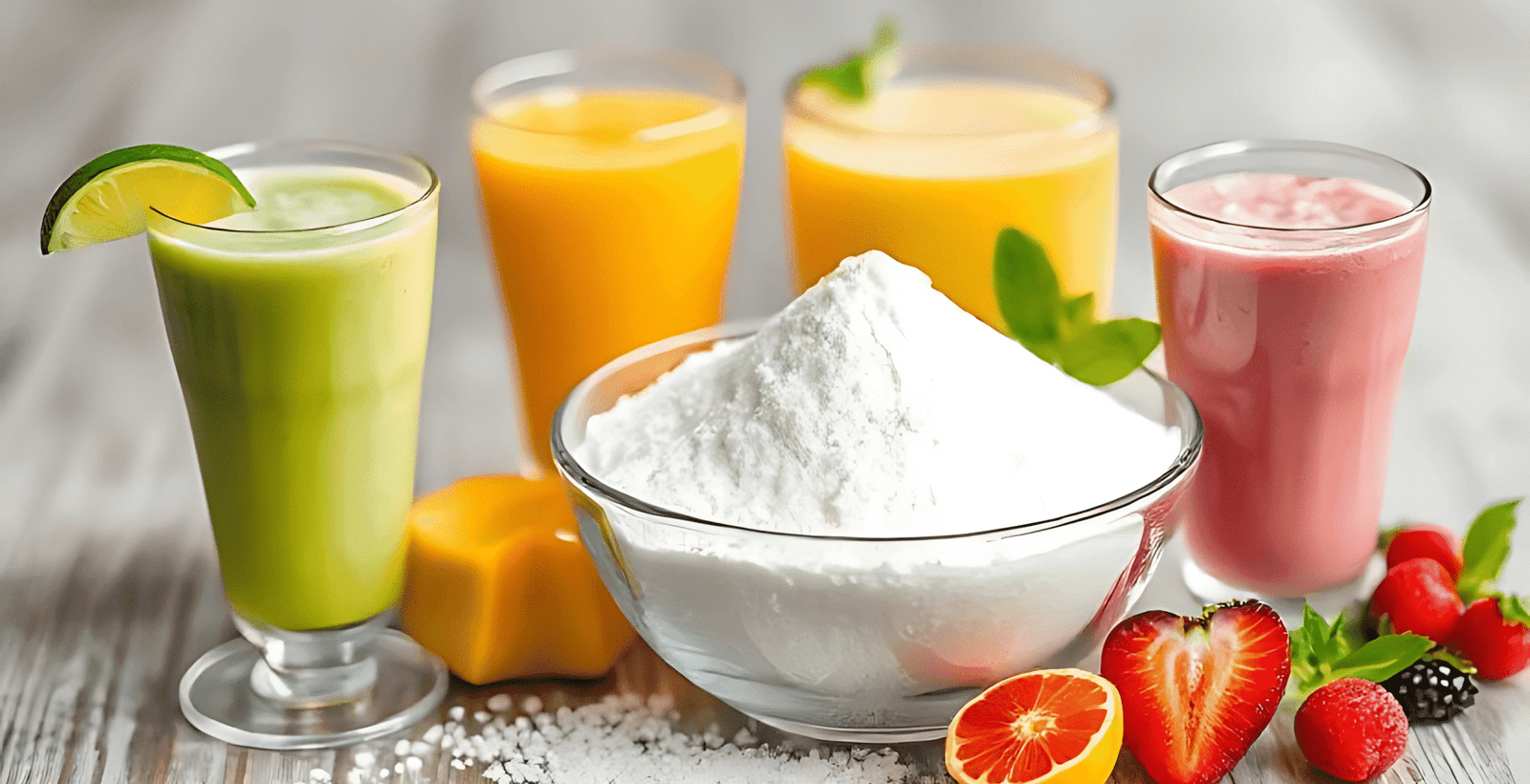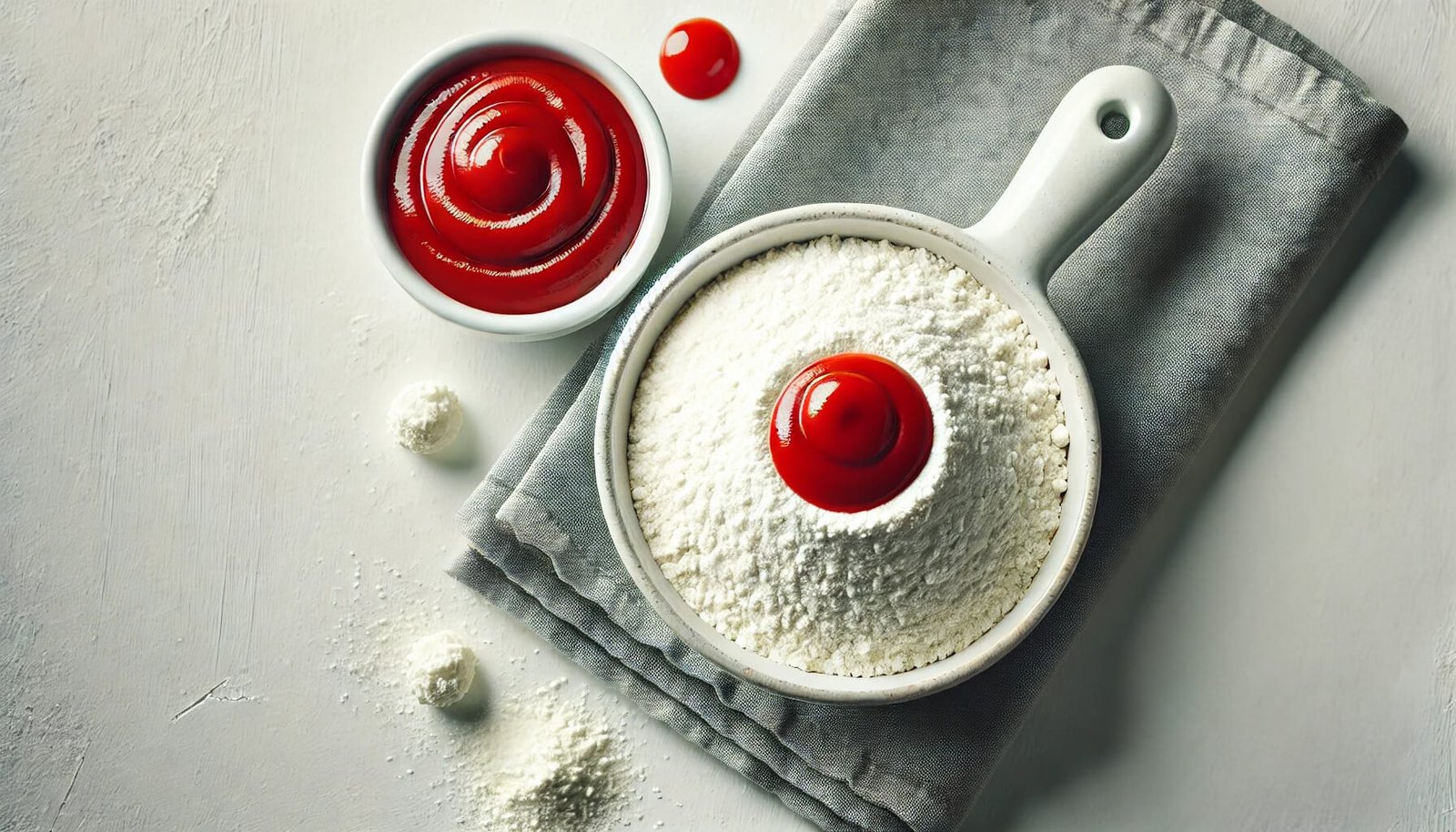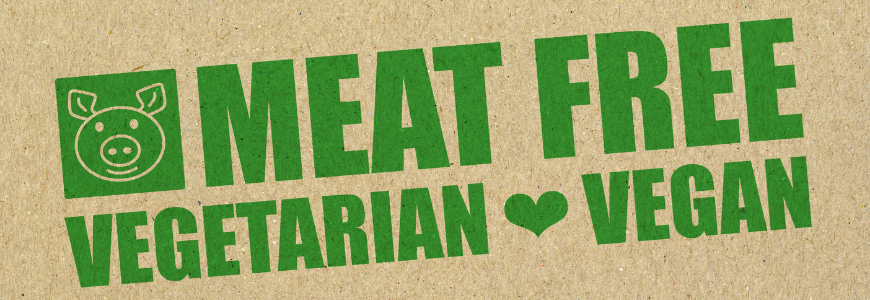Do you ever wonder what makes sauces, gravies, and other edible sauces thick and juicy? The answer is no other than Guar Gum Thickener! Today, we’re diving into the magical world of guar gum, the superhero of thickeners. In this blog, we’ll guide you through the basics of guar gum, comparing it to other thickening buddies you might find in your kitchen.
Thickening Agents in Food:
Before exploring guar gum thickener, let’s grasp the basics of thickening agents in food. These kitchen helpers make liquids thicker, turning a thin soup into a hearty stew or a runny sauce into a smooth masterpiece.
- Natural Thickening Agents: For natural cooking, many choose ingredients from nature. Arrowroot, tapioca, and agar-agar are natural thickening agents that add a bit of magic from Mother Nature, making dishes thicker and stable without artificial additives.
- Thickening Agents in Cooking: Enter the kitchen, where cooking magic happens. Flour, cornstarch, and gelatin are common thickening agents that transform regular recipes into delicious creations. These kitchen essentials create the perfect texture in sauces, gravies, and soups.
- Food Industry Stabilizers: In the food industry, stabilizers keep processed foods consistent. Emulsifiers, gelling agents, and thickeners are crucial for maintaining the quality of packaged treats, ensuring they stay fresh and delicious.
Comparison of Thickening Agents:
Guar Gum vs. Cornstarch:
| Basis | Guar Gum | Cornstarch |
|---|---|---|
| Source | Derived from guar beans. | Extracted from corn kernels. |
| Texture | Creates a smooth and consistent texture without a starchy taste. | May leave a slightly starchy taste and a thicker consistency. |
| Application | Works well in a variety of recipes, from soups to sauces. | Commonly used to thicken sauces, gravies, and soups. |
| Benefits | Ideal for those looking to avoid gluten, as it’s naturally gluten-free. | Not suitable for those with gluten sensitivity. |
| Clarity | Leaves liquids clear and smooth. | Can make liquids cloudy, especially when used in higher concentrations. |
| Heat Stability | Stable in a wide range of temperatures, suitable for both cold and hot preparations. | Requires heat to reach its full thickening potential, making it suitable for cooking applications. |
Guar Gum vs. Xanthan Gum:
| Basis | Guar Gum | Xanthan Gum |
|---|---|---|
| Source | Derived from guar beans. | Produced through fermentation of sugars |
| Texture | Imparts a smooth and consistent texture | Known for creating a viscous and elastic texture. |
| Application | Commonly used in cooking and baking. | Widely used in gluten-free recipes as a binding agent. |
| Benefits | Natural, gluten-free, and lacks the slimy feel associated with some thickeners. | Effective in small amounts, provides structure in gluten-free baking. |
| Clarity | Leaves liquids clear and transparent. | Can create a slightly cloudy appearance, especially in higher concentrations. |
| Synergy with Other Ingredients | May interact well with other thickeners and stabilizers. | Works synergistically with guar gum, often used in combination for enhanced texture and stability. |
| Allergen Information | Typically regarded as safe for individuals with typical food allergies. | Rare cases of allergic reactions have been reported, but it is generally considered safe for consumption. |
Guar Gum vs. Agar-Agar:
| Basis | Guar Gum | Agar-Agar |
|---|---|---|
| Source | Derived from guar beans, a plant-based source. | Derived from seaweed, making it a natural alternative. |
| Versatility | Highly versatile, suitable for both sweet and savory dishes. Frequently used in sauces, soups, and baked items. | Primarily used in desserts and confections due to its gelling properties. |
| Texture | Adds viscosity and thickness without affecting the color or flavor of the dish. Ideal for maintaining clarity in liquids. | Creates a firmer gel, making it suitable for jellies, puddings, and other gel-based desserts. |
| Clarity | Leaves liquids clear and smooth. | Can make liquids cloudy, especially in higher concentrations. |
| Gluten-Free | Free from gluten, making it appropriate for individuals with gluten sensitivities. | Naturally gluten-free, offering a safe option for individuals with gluten intolerance. |
| Quantity Required | Requires smaller quantities to achieve the desired thickness. | Generally requires a higher quantity to set liquids due to its strong gelling power. |
Choosing Your Thickener Champion:
Ultimately, the most suitable option depends on your particular requirements and needs. For gluten-free thickeners, heat stability, and a clean taste, guar gum thickener often takes the crown. However, if cost or a neutral taste is crucial, cornstarch or arrowroot might be suitable. When needing suspension, consider xanthan gum.
Beyond the Kitchen:
While we focused on culinary uses, guar gum thickener extends its magic beyond the kitchen. It also finds applications in:
- Pharmaceuticals: binding and stabilizing ingredients in tablets and capsules.
- Textiles: strengthening and wrinkle-resisting fabrics.
- Personal care: thickening shampoos and lotions.
Guar Gum: The Versatile Thickener
Now, let’s shine a spotlight on guar gum thickener and explore why it has become a favorite in both home kitchens and the food industry.
- Cooking Thickeners: Guar gum, derived from guar beans, has earned its place as a reliable cooking thickener. It possesses a unique ability to create a smooth and stable texture in a wide range of dishes, from soups to sauces.
- Guar Gum Benefits: Its benefits go beyond thickening. Guar gum thickener acts as a stabilizer, viscosity in food items, and prevents ingredients from separating. It’s also known for its clarity, making it an ideal choice for recipes where maintaining a clear appearance is essential.
- Thickening Agents in Recipes: Let’s get practical. Explore a variety of recipes that showcase the magic of guar gum. From decadent desserts to savory delights, see how this versatile thickener can elevate your culinary creations.
1. What is guar gum?
Derived from guar beans, guar gum is a natural thickening agent.
2. How does guar gum compare with cornstarch?
Guar gum provides a smoother texture and clear appearance compared to cornstarch.
3. Is guar gum cost-effective compared to xanthan gum?
Yes, guar gum is often more cost-effective than xanthan gum.
4. How does guar gum differ from agar-agar?
Guar gum excels in thickening without forming a gel, unlike agar-agar.
5. Can guar gum be used in baking?
Yes, guar gum is versatile and beneficial as a thickener in baking.
6. Is guar gum suitable for gluten-free recipes?
Yes, guar gum is gluten-free and serves as an excellent alternative in gluten-free recipes.
7. Can guar gum be used as a replacement for arrowroot in recipes?
Yes, guar gum can be a suitable replacement for arrowroot in various recipes.
8. Can guar gum be used in both sweet and savory dishes?
Yes, guar gum is versatile and enhances the texture of both sweet and savory recipes.
9. What makes guar gum suitable for those with allergies?
Guar gum is hypoallergenic, making it a preferred choice for individuals with allergies.
10. Can guar gum be used in both food and industrial applications?
Yes, guar gum is versatile and suitable for various applications, including food and industry.


